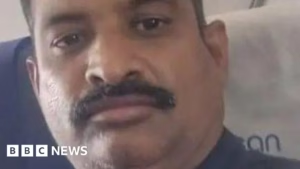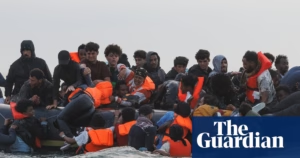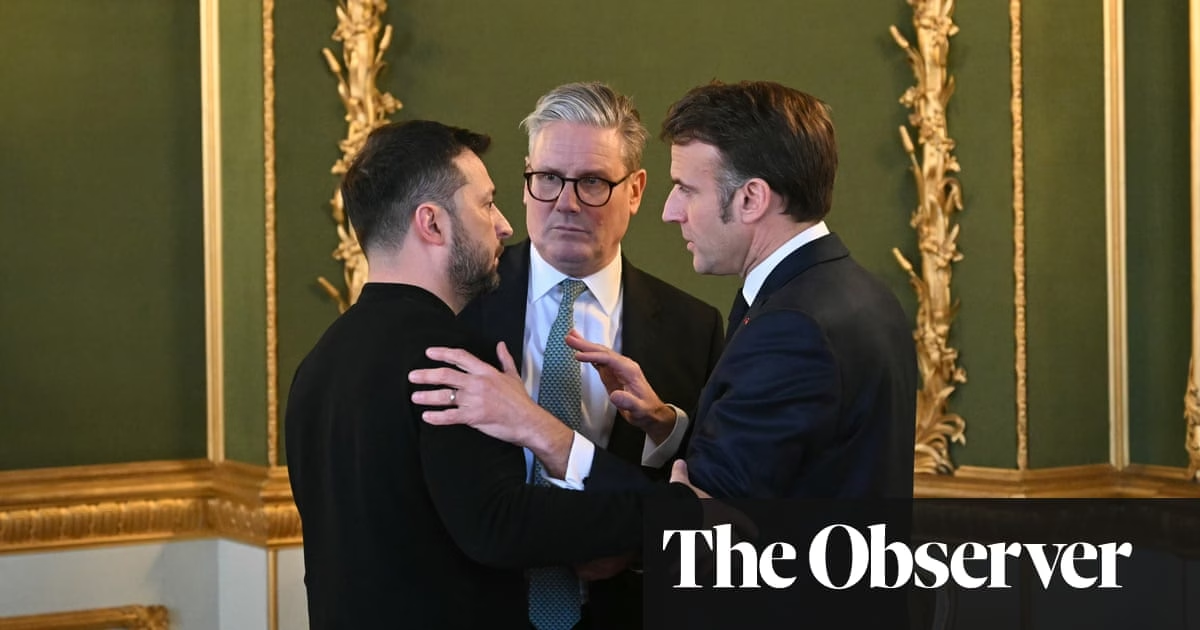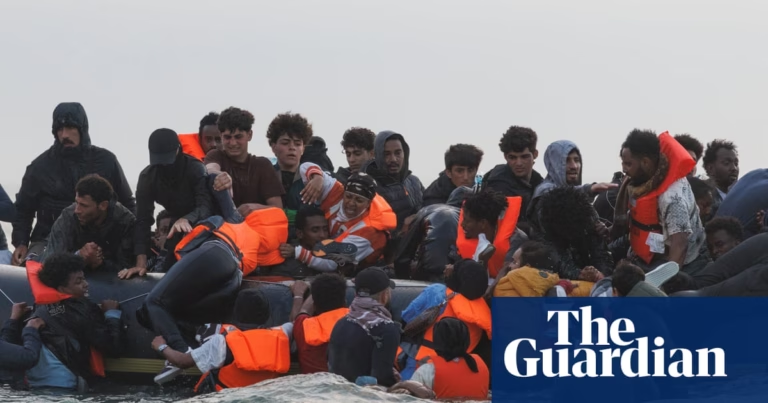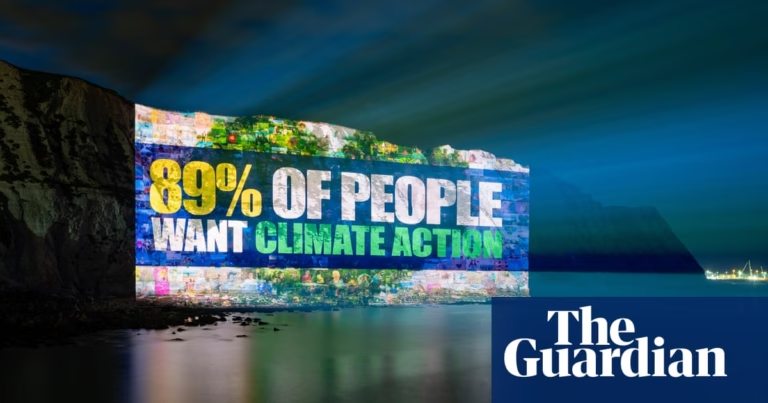When Keir Starmer rose to his feet at Prime Minister’s Questions on Wednesday, he delivered a stirring tribute to six British soldiers who lost their lives in Afghanistan 13 years ago.
He read out their names one by one, deliberately and deliberately. The House was silent. The Prime Minister then added a tribute to a British Royal Marine, who was 22 years old and also killed on 6 March in Helmand province, but in 2007.
These were poignant moments during what is normally a noisy and crude political debate. Starmer informed MPs that more than 642 individuals had died fighting for Britain alongside their allies in the wars in Afghanistan and Iraq. Many more had been injured. “We will never forget their bravery and sacrifice,” Starmer said.
But the Prime Minister’s tributes were not just for the families of the lost soldiers. Nor were they just for British ears. They were also intended to be heard loud and clear in the US, inside Donald Trump’s administration, by Vice President JD Vance, who the day before had apparently disrespected British troops by suggesting that a US stake in Ukraine’s economy was a “better security guarantee than 20,000 troops from some random country that hasn’t fought a war in 30 or 40 years”.

Less than a week after Starmer’s conservative embrace of Donald Trump in the White House, opinion on how to respond to the new US administration had evolved not just here, but across Europe.
The erratic and sometimes insulting remarks by Trump and Vance towards European governments had left politicians facing two realities: first, that they needed to push back against Trump and Vance without escalating tensions further; and second, that they needed to formulate a plan for a world in which the US would no longer be the cornerstone of western security for the long term.
As one European diplomat put it, “It has become clear that Trump is not saying things just to provoke us, but because he believes them.”
Amid the chaos, Ukrainian President Volodymyr Zelenskyy was in Brussels to address an EU summit on the security crisis. EU leaders rose to their feet to greet him, offering backslaps and air kisses. While Zelenskyy was there, Trump’s Ukraine representative Keith Kellogg defended the US decision to freeze military aid brutally: “The best way I can describe it is like hitting a mule with a two-by-four across the nose. You get their attention.”
Signs of Europe’s historic shift were everywhere, from the rhetoric of French President Emmanuel Macron to the ambitious ideas for collective defense voiced by the European Commission and the announcement by Polish Prime Minister Donald Tusk for all men in Poland to undergo military training.
But it was in Germany that the change was most pronounced. After months of campaigning to defend his country’s strict “debt brake”, incoming chancellor Friedrich Merz struck a deal with his likely coalition partners, the SPD, to raise hundreds of billions of euros for defense and infrastructure.
“Given the threat to our freedom and peace on this continent, the mantra for our defense is now ‘whatever it takes,’” Merz said.
Macron, who has argued for Europe’s “strategic autonomy” since taking office in 2017, felt vindicated.
“Our wish is to be a power of peace and balance,” he told reporters after the EU summit. “To arm ourselves and avoid tomorrow’s war.”
He called Russian President Vladimir Putin an “imperialist who seeks to rewrite history.”
Valérie Hayer, an ally of Macron in the European Parliament and leader of the Liberal Renew group, argued that EU countries must sustain their commitment to defense spending and collective nuclear deterrence.
Germany’s newspapers recognized the historic nature of this moment for a country that had avoided direct military involvement since the end of World War II.
Marina Kormbaki, writing in Der Spiegel, argued that Germany could not avoid taking a stand: “The federal government must lead the Europeans, guide them to ensure their own security. It must set a good example and invest in the Bundeswehr’s material and personnel. Only then will other states follow suit. Only then will Vladimir Putin of Russia take Europe seriously.”
Later this month, European Commission President Ursula von der Leyen will detail her defense funding plan when she presents a white paper.
The EU executive is exploring every avenue to fund defense: fiscal rules will be relaxed to allow member states to increase deficits and debt to fund military purchases, a measure that could raise €650bn if every country did the maximum possible. EU development funds could also be redirected to defense if governments agree.
As pro-Putin Hungary tries to block EU action, Brussels is considering ways to support Ukraine via “coalitions of the willing” rather than consensus among member states.
Any doubts European leaders had about Trump’s intentions toward Ukraine have now been dispelled. Downing Street still insists that it is in constant discussion with the Trump administration about the United States providing a permanent security guarantee if a peace deal is signed.
But there is no obvious progress. 24 hours after suspending aid to the country, US intelligence sharing was curtailed. The Trump administration later ordered US technology company Maxar to stop sharing its satellite images with Ukraine showing Russian positions on the battlefield.

These punitive measures left Ukrainians reeling. The alert systems that warned civilians of incoming missiles and Russian bomber plane take-offs no longer worked effectively. Russia took advantage of this by launching a massive air strike on Ukraine’s energy grid and residential areas. Trump seemed indifferent to the carnage he enabled, stating flatly that “it’s what anyone would do”.
Hours after US intelligence sharing was frozen, the Kremlin launched a significant attack on Ukraine’s armed forces in the Kursk region, where for seven months Kyiv had held a small area inside Western Russia. Russian and North Korean troops broke through south of the Ukrainian-held town of Sudhza. An unknown number of Ukrainian soldiers were killed.
About 10,000 Ukrainian troops in the Kursk Oblast are at risk of being surrounded. In the next few days, as Ukrainian and US officials meet in Saudi Arabia, President Volodymyr Zelenskyy will face a difficult decision. He had hoped to use the territory as a bargaining chip in negotiations with Russia. Zelenskyy, with the commander-in-chief of Ukraine’s armed forces, Colonel General Oleksandr Syrskyi, could either order a withdrawal or try to avoid a massacre. Speaking to The Observer, Ukrainian servicemen expressed their readiness to continue fighting: “What Trump says is incorrect. It is nonsense. He does not seem to understand that Russians come here to kill us… The Russians bomb us every night. They kill our women and children. We need weapons to defend ourselves. This war is a battle between good and evil. We hope too that Europe and the world will support us.”
Since their tense meeting at the White House, Zelenskyy has tried to improve relations with Trump. Last week, Zelenskyy outlined a possible ceasefire: a “truce” in the sky, which would stop drone and missile attacks from both sides, and a halt to maritime operations in the Black Sea. There was no mention of a European peacekeeping force or security guarantees, issues that angered Trump when they were raised in the Oval Office.
However, Putin seems uninterested in peace. His advisors say Russia is unwilling to compromise on any of its demands, including the takeover of four Ukrainian regions, Ukraine’s neutrality, and the removal of Zelenskyy’s government.
Meanwhile, suspicion grows that the White House may be collaborating with Russia in its anti-Zelenskyy campaign as European leaders desperately seek to respond to the crumbling certainties of their 80-year-old transatlantic alliance.

